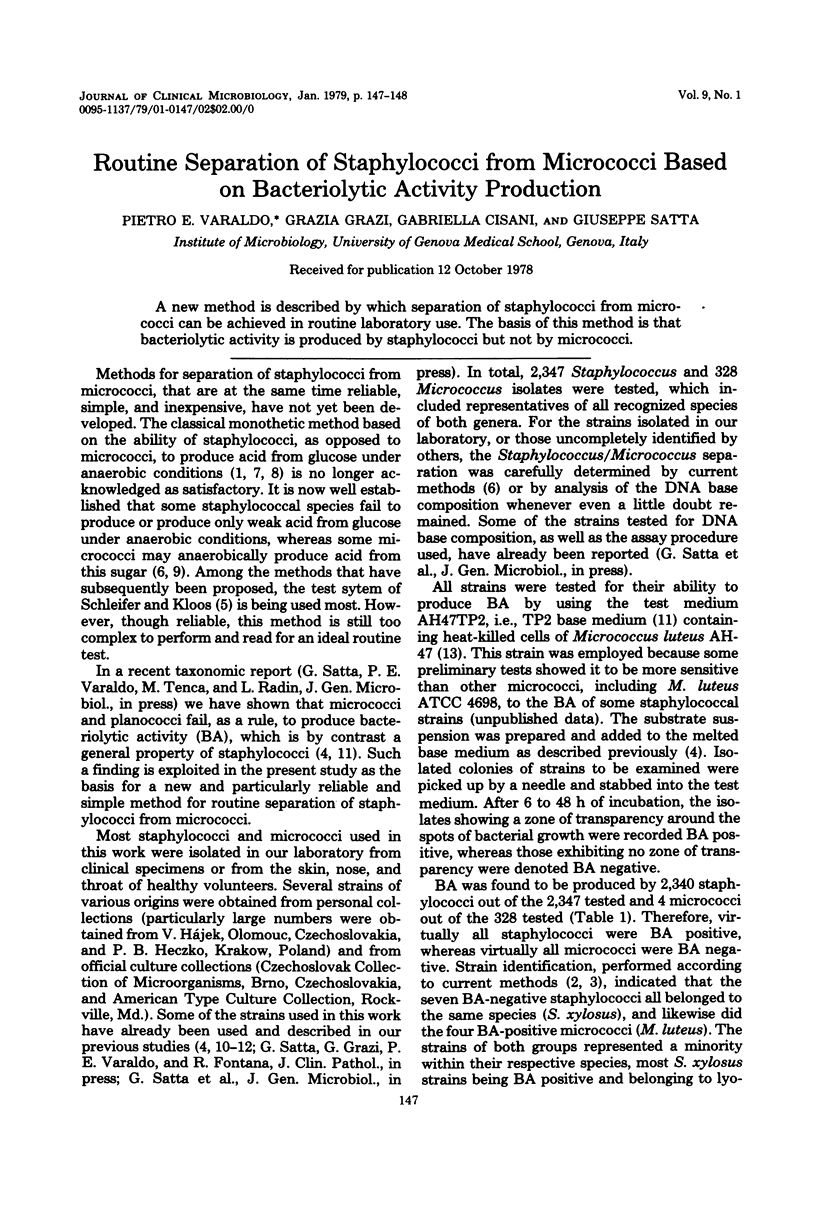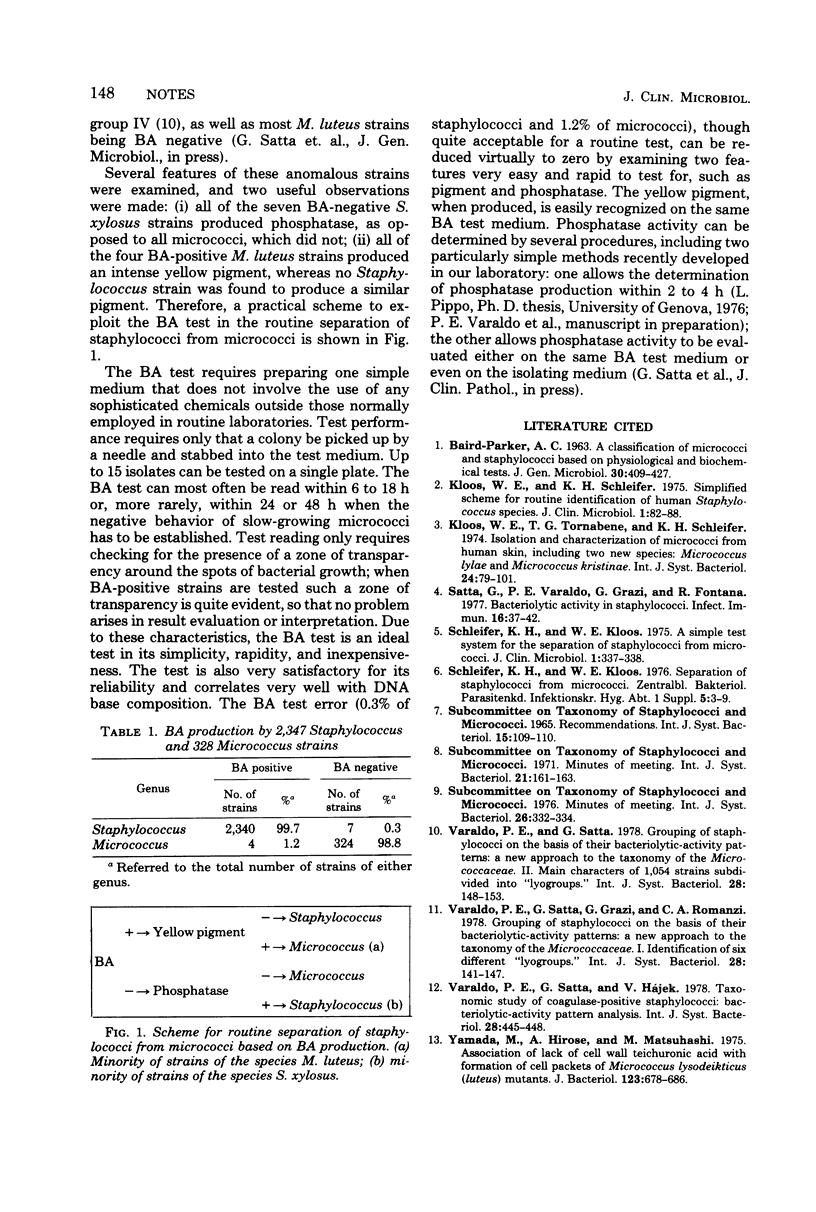Abstract
A new method is described by which separation of staphylococci from micrococci can be achieved in routine laboratory use. The basis of this method is that bacteriolytic activity is produced by staphylococci but not by micrococci.
Full text
PDF

Selected References
These references are in PubMed. This may not be the complete list of references from this article.
- BAIRD-PARKER A. C. A classification of micrococci and staphylococci based on physiological and biochemical tests. J Gen Microbiol. 1963 Mar;30:409–427. doi: 10.1099/00221287-30-3-409. [DOI] [PubMed] [Google Scholar]
- Kloos W. E., Schleifer K. H. Simplified scheme for routine identification of human Staphylococcus species. J Clin Microbiol. 1975 Jan;1(1):82–88. doi: 10.1128/jcm.1.1.82-88.1975. [DOI] [PMC free article] [PubMed] [Google Scholar]
- Satta G., Varaldo P. E., Grazi G., Fontana R. Bacteriolytic activity in staphylococci. Infect Immun. 1977 Apr;16(1):37–42. doi: 10.1128/iai.16.1.37-42.1977. [DOI] [PMC free article] [PubMed] [Google Scholar]
- Schleifer K. H., Kloos W. E. A simple test system for the separation of staphylococci from micrococci. J Clin Microbiol. 1975 Mar;1(3):337–338. doi: 10.1128/jcm.1.3.337-338.1975. [DOI] [PMC free article] [PubMed] [Google Scholar]
- Yamada M., Hirose A., Matsuhashi M. Association of lack of cell wall teichuronic acid with formation of cell packets of Micrococcus lysodeikticus (luteus) mutants. J Bacteriol. 1975 Aug;123(2):678–686. doi: 10.1128/jb.123.2.678-686.1975. [DOI] [PMC free article] [PubMed] [Google Scholar]


